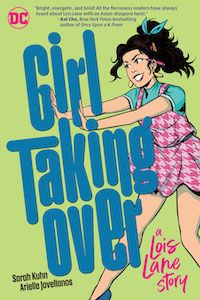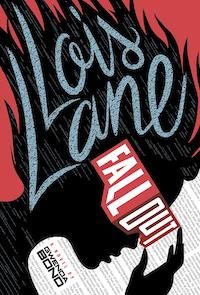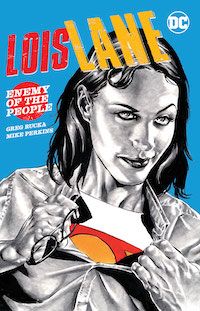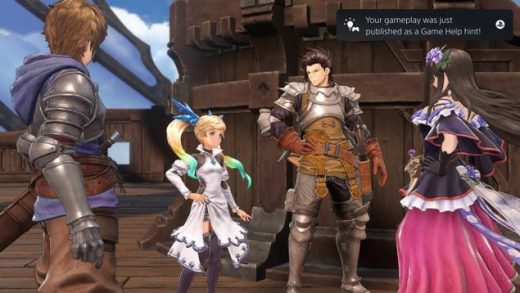In 1938, the company that would become DC Comics published Action Comics #1, in which they introduced the world to a formative comic book character: a hero who would define a medium, become a household name, and inspire generations.
I’m speaking, of course, of Lois Lane.
Eighty-five years after she first fast-talked her way onto the page, Lois Lane remains one of DC’s most famous characters, up there with Batman and Wonder Woman and far more well-known than supposed marquee characters like, say, Green Lantern. (Sorry, GL.) She bears the rare distinction of having stuck around as her hero’s primary love interest since they both debuted. Batman isn’t with Julie Madison and Spider-Man isn’t still mooning over Betty Brant, but Lois and Clark have been married since 1996 (uh, give or take a few reboots that we’re going to ignore). She held down her own comic for longer than any female character in superhero comics besides Wonder Woman. She’s headlined two live action TV shows, Lois & Clark and Superman & Lois, and appeared in every Superman feature film.
 |
But Lois isn’t impressive historically speaking. Besides appearing regularly in DC’s several monthly Super books, she’s starring in new and fully contemporary takes all on her own, like Girl Taking Over: A Lois Lane Story by Sarah Kuhn and Arielle Jovellanos. Girl Taking Over is a YA graphic novel that reimagines Lois as an ambitious Asian teen whose dreams of a prestigious summer internship are derailed by a corporate takeover of the progressive website she’s been hired to work for. But when Lois uncovers a local scandal, she has to figure out how to break the story when her employer wants her to hush it up — and if she’s willing to take the risks that come with speaking truth to power.
 |
I spoke to Kuhn and Jovellanos, as well as a couple of other creators who’ve worked on Lois in recent years, about what makes the character so great, and specifically why she continues to feel relevant and exciting in a world very different from the one in which she debuted.
“The thing about Lois Lane is she simply refuses to be a sidekick or mere love interest,” Sarah Kuhn told me. “In nearly every incarnation since her inception, she’s had her own wants, desires, and ambitions. She’s never waiting around for Superman to do his thing.”
Gwenda Bond, who wrote a trilogy of Lois Lane YA novels (Fallout, Double Down, and Triple Threat), also highlighted Lois’s independence. “Right from the beginning, she was a fully formed, independent, brave journalist on the page,” she said. “She’s tough, but it’s her caring and commitment to justice that motivate her […] She endures because we still need her.”
Mike Perkins, who drew the 2019 Lois Lane miniseries written by Greg Rucka, agrees that Lois’s career is a big part of her timelessness: “Lois is a smart, inquisitive, tough investigative journalist. She’s generally reflected the world around her and subsequently been as equally frustrated and angry about the injustices around her as the readership is. That’s a mighty base for a character.”
Citing Lois’s career as a reporter as what makes her timeless struck me as interesting. After all, at the end of the day, The Daily Planet is still a traditional newspaper. Though journalism was seen as inherently heroic when Lois debuted in the 1930s, there have been plenty of times in the decades since that DC has tries to sever Superman — and by extension, Lois — from the paper, whether that’s putting Clark on TV as an anchorman in the 1970s, or that embarrassing time about a decade ago that they had Lois quit the paper to start a blog.
But what underlies journalism — speaking truth — is never out of style. Even though the medium may change, the importance of uncovering corruption endures. That’s truer today than ever before, and it’s at the heart of Girl Taking Over, when Lois discovers a local theater bigwig abusing his power over young artists, including her former best friend, Miki. When Lois’s boss kills the story, she and Miki create their own site where they can shine a spotlight on stories that are going unheard.
Though Lois’s drive to get the story out there is familiar, Miki is a new face. In fact, the only supporting character in Girl Taking Over who you’ll find in the regular DC universe is fellow Daily Planet reporter Cat Grant, reimagined here as Lois’s journalistic idol. It’s a story completely removed from Lois’s familiar setting of Metropolis, sci-fi shenanigans, and a certain guy in red and blue. (It’s also an exceedingly rare story in that it focuses on Lois’s friendship with another female character, which was so refreshing. More of this, please, DC!)
So when you take away Lois’s usual trappings, how do you keep Lois recognizably Lois?
“To me, it’s that Lois Lane fight,” Kuhn says. “She never gives up, ever […] I think that fight is a necessary component to nearly any depiction of Lois.”
 |
Bond’s teen Lois deals with much more typically Lois battles than Sarah and Arielle’s — mad scientists! shady experiments! mutant teens! — but she agrees that the fight is key: “[Lois’s] innate core is to run toward danger, not away from it.”
A character only sticks around as long as Lois has if they’re interesting to write and draw, so just for fun, I asked the creators I spoke to what they enjoyed most about working on Lois. It’s here where I got my favorite answers, because where they’d previously been pretty much on the same page, I got four completely different responses:
“I loved writing her. I always say, the joy of Lois for a writer is that she creates story,” Bond said. “You can put her in a locked room and she will make something happen.”
“I loved that Arielle and I were able to pour so much of ourselves and our experiences into our teenage Asian American Lois Lane,” said Kuhn. “Growing up in a really small, really white town, I felt like I was always fighting something, but it took me a while to find my own voice and learn how to express myself. A lot of Lois’s journey in our book is similar — she has to realize that she doesn’t need to wait around for someone to deem her voice worthy or give her permission or a platform. She can do it herself. That felt so empowering to write.”
Jovellanos pointed out that while Lois is an energetic, expressive character, she’s not a superhero.
“Her big power moments are about cracking a story, discovering the truth, and finding the right words to express it. There’s a challenge in figuring out how to make a moment like this sing in a visual medium like comics […] Figuring out how to do justice to Lois’s epic, superhero moments — how to express the abstract joy of writerly obsession — was the best thing about drawing her.”
 |
For Perkins, working within the mainstream DC universe, it was Lois’s place in that universe that made the experience memorable. “One thing Greg Rucka and I wanted to establish in our Lois Lane series is that Lois is the most powerful person in the DC Universe, even without super enhancements. She knows all the secrets […] She’s probably the one individual who knows when Batman disappears from behind her when they’re talking on a rooftop!”
Those four different answers highlight something key: for a character to endure, they need to be both specific and flexible. Lois is a very specific character, with traits that stay recognizable in any setting. All of the creators I spoke to — and generations of fans — agree that she’s bold and tenacious. She’s unafraid to speak truth to power and stand up for the little guy. She’s admittedly prone to getting herself in over her head (but pretty good at getting herself out, with or without Kryptonian assistance).
But her character has lasted because she flexes — from her brassy screwball roots to Margot Kidder’s post-Watergate raw, anxious nerve to today’s digital oversaturation of news, distractions, and doomscrolling. She can plausibly go toe to toe with DC’s heaviest hitters, but she can also inspire a kid in a small town, or a storyteller alone in their room. She can be whatever the story and the reader needs her to be, as long as it’s someone who will always tell the truth, no matter what the cost. That’s a hero we need more than ever.
To celebrate Lois’s anniversary, there’s no better place to start than with these creators’ work. Pick up Girl Taking Over by Sarah Kuhn and Arielle Jovellanos for a gleefully candy-colored story about female friendship and finding your own voice, or Fallout for a fast-paced sci-fi mystery (and a little swoony teen romance for the Clark/Lois shippers!), or delve into Lois’s noir side with Greg Rucka and Mike Perkins’s series, collected as Lois Lane: Enemy of the People. They’re three very different books, but they all capture the beating heart of Lois Lane — DC’s first heroine, timely, timeless, and evergreen.
Happy anniversary, Lois. Here’s to another 85 years.
Source : The Timeless Appeal of Lois Lane













